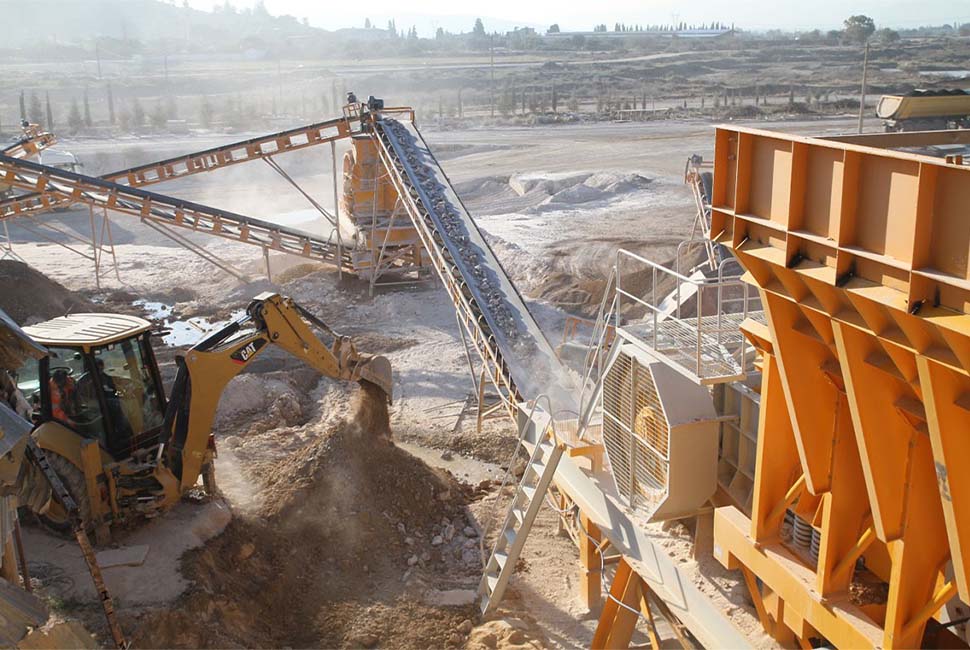Mining new value from the circular economy
Mining new value from the circular economy
- 16 April 2019
In brief
- How can established mining and metals companies safeguard their market share while also tapping into rich new value?
- This report explores how new business models are putting pressure on metals and mining companies to adapt fast, embrace change and stay relevant.
- Learn about proactive steps to capitalize on emerging opportunities and tap into sustainable new revenue streams in the circular economy.
Extracting value from the circular economy
With the rapid rise of global recycling and shift to the circular economy, mining and metals companies are under increasing pressure. How can they safeguard their existing market share while competing with new players for a slice of the fast-growing recycling market? Rising downstream demand is creating risk as more innovative players capitalize on new opportunities to monetize circularity.
40% of steel produced is now made from scrap metal.
41 mobile phones can yield as much gold as one tonne of ore.
$4.5T of opportunity from eliminating waste through the circular economy.
For mining and metals companies, the issue is twofold: first, they’re not always well positioned to monetize the new recycling flow; and second, increased circularity will likely impact primary demand as waste and material losses are reduced.
Changing supply chains and new business models are raising questions about the future-readiness of incumbents. And, as the global recycling market matures, they must adapt fast.
Rising to the recycling challenge
The report drills down into the impact recovery, reprocessing and reuse of metals is having on the industry. With an understanding of these trends, you can target your investments, business models and innovation where they will be most effective.
Manufacturers taking the lead
In the consumer goods, retail and automotive sectors, manufacturers have been taking a lead in circular innovation. But in mining and metals, new opportunities to drive value from changing market demand remain largely untapped.
Mining and metals companies at risk
Manufacturers, from Caterpillar to Maersk, are getting better at recovering their investment in natural resources in closed-loop cycles. But if all the innovation is happening downstream, incumbents risk losing market share.
Changing patterns of demand
In the coming years, mining and metals companies could increasingly face the triple impact of population decline, increased circularity and post-industrial economic models that will further reduce demand for many traditional metals.New threats, new opportunities
The transition to a low-carbon economy will see more demand for new base and precious metals, including cobalt, lithium and REEs, silver, nickel, lead and zinc. But with finite reserves, opportunities for circular innovation will be snapped up by first-movers.Innovation in action
While the challenge for mining and metals companies is to work out where best to focus, a small cohort of mining and metals companies is taking a lead. These visionaries, including Rio Tinto, ArcelorMittal, Codelco and Novelis, are acting on the market shifts and developing new circular business models to support their customers and respond as requirements change.To succeed, mining and metals companies must reposition. Fast.
To keep pace with the front-runners, all mining and metals companies must assess where the risks of decreased demand or substitution loom largest. It’s vital to understand which materials can be recovered most effectively and know where downstream changes present threats and opportunities. Then, with the right business models, these companies can accelerate the transition to the circular economy with confidence.Three steps to embrace circularity
1.Develop circular operations
Start by accelerating circular initiatives across your mining and metals operations, for example, using real-time monitoring, analytics and predictive maintenance while promoting remanufacturing and end-of-life recycling.2.Innovate new circular products and services
Secondly, engage with downstream users of your materials to co-create innovative circular products and services, enabled by advanced technologies to facilitate better recovery, reprocessing and reuse.3.Collaborate with customers and build a circular partners’ ecosystem
Finally, collaborate proactively up and down your supply chains to drive industry momentum and create a more favorable environment to retain ownership and benefit from extended product lifecycles and improved circularity.Get set for the new gold rush
With the industry poised for disruption, how will you embrace circularity? As a first mover, you can build closed-loop systems, lock-in downstream ecosystems and drive sustainable value, competitive advantage and future growth.

